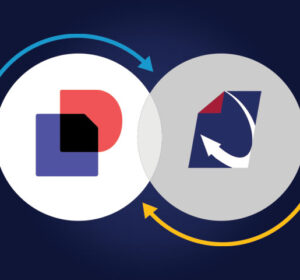Simplify HR Workflows: Unlock the Potential of Document Management Systems

Transforming HR Workflows
For HR teams, managing employee records is more than just a routine task—it’s the backbone of efficient workflows and compliance. Yet, many organizations rely on document storage systems that simply can’t keep up with today’s demands.
While storage systems are sufficient for saving and retrieving files, they often fall short when it comes to tackling compliance requirements, streamlining workflows, or enhancing security. Enter document management systems (DMS): the smarter, scalable solution for handling documents throughout their lifecycle.
If you’re considering a digital transformation for your HR department, here’s what you need to know about the difference between storage and management—and why making the switch can transform your operations.
Document Storage vs. Document Management: The Key Differences
Document storage is like a virtual filing cabinet—it holds your files, but that’s about it. You can save, retrieve, and organize documents, but most storage systems lack tools to automate processes or manage compliance effectively.
Document management systems, on the other hand, are designed to handle the entire lifecycle of employee filing. From creation to secure storage, retrieval, and eventual disposal, a DMS includes advanced features such as:
- Automated Workflows: Handle repetitive tasks like approvals and reminders.
- Secure Collaboration: Allow authorized users to work on documents while safeguarding sensitive information.
- Compliance Management: Automatically track retention schedules and audit trails.
For HR teams managing large volumes of employee data, these advanced features aren’t just nice to have—they’re essential.
Why HR Teams Are Upgrading to Document Management
1. Save Time and Boost Efficiency
Searching for documents is one of the biggest productivity killers. Employees spend an average of 2 hours per day looking for files (The Harris Poll), which adds up to 25% of a standard workweek.
An electronic HR document management system eliminates wasted time with:
- Quick Search Tools: Locate files instantly using keywords, tags, or filters.
- Workflow Automation: Assign tasks, collect forms, and send reminders without manual effort.
Imagine being able to retrieve an employee file in seconds rather than hours. That’s the power of DMS.
2. Strengthen Security
In a world where data breaches are on the rise, HR teams handle some of the most sensitive information in any organization. A document management system provides advanced protections, including:
- Access Control: Restrict document access based on roles to prevent unauthorized viewing.
- Encryption: Ensure data is secure during storage and transmission.
- Audit Trails: Monitor every interaction with a document for full accountability.
Stat: 94% of companies using cloud-based systems report improved data security (Cisco).
3. Ensure Compliance with Ease
Regulations like HIPAA, GDPR, and FERPA require meticulous handling of employee records. Missing a compliance deadline or audit requirement can lead to fines and reputational damage.
A DMS simplifies compliance by:
- Automating retention schedules.
- Tracking changes and access to documents.
- Centralizing files for easy access during audits.
For HR teams, this means less time worrying about regulations and more time focusing on strategic priorities.
4. Grow Without Limits
As your organization expands, your document management system grows with you. Unlike basic storage solutions, a DMS integrates seamlessly with HRIS, payroll systems, and other tools, ensuring your workflows remain unified and efficient.
How Industries Are Leveraging Document Management Systems
Education
- Digitize enrollment paperwork and academic records for easy audits.
- Manage onboarding for faculty, staff, and students while maintaining FERPA compliance.
Healthcare
- Simplify credential tracking for nurses, physicians, and medical residents.
- Ensure HIPAA compliance by securely storing patient and employee records.
Legal
- Secure sensitive case files with encryption and role-based access.
- Automate document approvals for faster, more accurate processes.
Staffing
- Centralize records for easy compliance checks during audits.
- Handle high-volume hiring with automated workflows for onboarding.
Making the Switch: Transitioning to Document Management
If you’re ready to move beyond storage, here’s how to get started:
- Evaluate Your Needs: Identify inefficiencies in your current system and define your goals.
- Digitize Your Records: Convert paper files into organized, searchable digital formats.
- Choose the Right DMS: Look for features like automation, compliance tracking, and scalability.
- Train Your Team: Ensure a smooth transition by providing hands-on training and resources.
- Monitor and Optimize: Use analytics and feedback to refine your processes over time.
Future-Proof Your HR Workflows
Upgrading to a document management system is more than a technology investment—it’s a strategic decision that empowers your HR team to work smarter, not harder. With features like automation, enhanced security, and compliance tracking, a DMS transforms how you manage employee files while setting the stage for long-term success.
Explore the benefits of cloud-based document management and take the first step toward a more efficient HR future. Schedule a demo and learn how cloud-based systems can simplify your workflows today.


